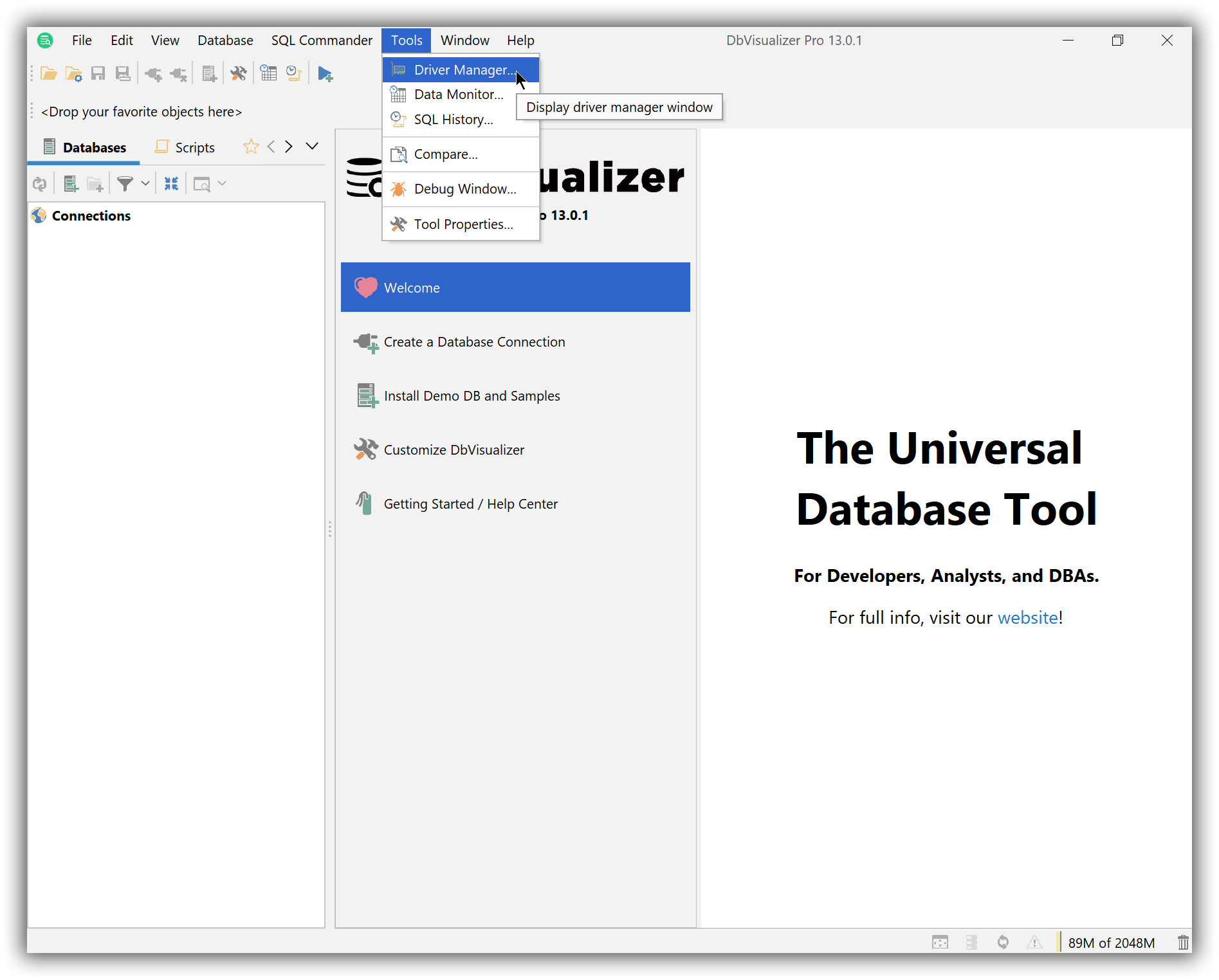

For MySQL, the JDBC Driver Class Name is, and the JDBC URL jdbc:mysql://server:port/database, where server, port and database are replaced with the appropriate values for your database. The other fields depend on the databases you want to work with. DB_ONE_TABLE as the Local Table Name and TEST_LINK as the Remote Table Name. Enter all information for the table in the DB_ONE database, e.g.

Select it and choose Create Linked Table from the right-click menu. Connect to the H2 database and navigate to the Linked Tables node.~/mydb to create it in your home folder). select H2 Embedded as the driver and enter a file name for the database (e.g. Create an H2 Embedded connection using the Connection Wizard, i.e.For instance if both DB_ONE and DB_TWO are MySQL databases, add the MySQL driver JAR file. Add the JAR files for the database(s) you want to work with to the Driver jar Files list.
 Open Tools->Driver Manager and select the H2 Embedded driver. Here's an example involving two databases, here called DB_ONE and DB_TWO, each with a table like this: CREATE TABLE test_link (įollow these steps to set up an H2 database with the Linked Tables: So to combine columns from a table in one database with columns from a table in another database, you create Linked Tables for each table in the H2 database and then run a SELECT statement joining the Linked Tables. A Linked Table is a table in another database of any kind that you can connect to through JDBC. H2 supports something called Linked Table. All you need to create an H2 database for this purpose is bundled with DbVisualizer. See the documentation for your database for details.Īnother alternative is to use an H2 database as an intermediary. Some databases, like Oracle, offer concepts like "database links" to make this possible and you can use those features in DbVisualizer. DbVisualizer does not in itself support cross database connection queries.
Open Tools->Driver Manager and select the H2 Embedded driver. Here's an example involving two databases, here called DB_ONE and DB_TWO, each with a table like this: CREATE TABLE test_link (įollow these steps to set up an H2 database with the Linked Tables: So to combine columns from a table in one database with columns from a table in another database, you create Linked Tables for each table in the H2 database and then run a SELECT statement joining the Linked Tables. A Linked Table is a table in another database of any kind that you can connect to through JDBC. H2 supports something called Linked Table. All you need to create an H2 database for this purpose is bundled with DbVisualizer. See the documentation for your database for details.Īnother alternative is to use an H2 database as an intermediary. Some databases, like Oracle, offer concepts like "database links" to make this possible and you can use those features in DbVisualizer. DbVisualizer does not in itself support cross database connection queries.







 0 kommentar(er)
0 kommentar(er)
